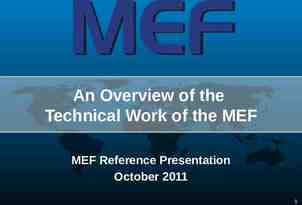Chapter 9: Insol ation Control of Monsoons Chang Yu Pei 2003.05.08
21 Slides3.72 MB

Chapter 9: Insol ation Control of Monsoons Chang Yu Pei 2003.05.08

Introduction Monsoon circulations exist on Earth today because the land responds to seasonal cha nges in solar radiation much more quickly than does the ocean. In this chapter will examine evidence that changes in insolation over orbital time scal es have driven major change in the strengt h of the summer monsoons.

Monsoons Circulations Sea & Land Orbital-Scale Control Tectonic

Outline Monsoon Circulations Orbital-Scale Control of Summer Monsoons Evidence of Orbital-Scale Changes in Summer Monsoons Joint Tectonic and Orbital Control of Monsoons

Monsoons Circulations ( summer ) In summer, strong solar radiation causes rapid warming of the land, but slower and much less intense warming of the ocean. Rapid heating over the continents causes air to warm, expand, and rise, and the upward movement of air creates an area of low pressure at the surface. Flow of air toward this lowpressure region causes in-and-up motion of warm, moist air from the oceans.

Monsoons Circulations ( winter ) In winter, when solar radiation is weaker, air over the land cools off rapidly, increases in density in relation to air over the still-warm ocean, and sinks from higher levels in the atmosphere. The overall atmospheric flow in winter is a downand-out movement of cold, dry air from the land to the sea.

Here focus on past variation of the North African monsoons. North African lies far from the high-latitude that might complicate the direct response of land surface to solar heating. The ocean around North Africa yield a rich variety of climate records showing monsoon-related signals.

Monsoon circulations over North Africa Strong solar heating in the northern hemisphere’s summer, a low-pressure region develops over westcentral North Africa, drawing moisture-bearing winds in from the tropical Atlantic to the south. In winter, solar radiation over North African land surface by back radiation causes sinking of air from above, and a highpressure cell develops at the surface over the northwestern Sahara Desert.

Orbital-Scale Control of Summer Monsoons The idea that changing insolation could control th e strength of monsoons over orbital time scales w as proposed by the meteorologist John Kutzbach i n 1980s. This hypothesis has been widely accepted. Monsoon circulation are linked to changes in the s trength of solar radiation during summer and wint er, long-term, orbital-scale changes in the strengt h of summer and winter insolation should have aff ected the strength of the monsoons in the same manner in past.

The orbital monsoon hypothesis Stronger in-and-up monsoo n flows in summer should o ccur at the same time in th e past as stronger down-an d-out monsoon flows in win ter. It seem that the climatic e ffects of these opposed ins olation trends in the two se asons might cancel each ot her. Precipitation.

Three assumptions First, assume a threshold insolation level. Second, stronger insolation should drive st ronger monsoons and fill lakes to higher le vels. Third, the strength of the monsoon at any time in the past as recorded in the record of lake levels is composite of the average monsoon strength over many individual su mmers.

Evidence of Orbital-Scale Changes in Summer Monsoons Between 85,000 and 130,0 00 years ago, when the su mmer insolation curve reac hed strong maxima becaus e of modulation of prcessio n by orbital. The weaker insolation maxi ma near 35,000 and 60,00 0 years ago are predicted t o create much weaker pea k monsoons.

Monsoons and Nile floods The critical link is the Nile River which gathers most of its water from the highlands of eastern North Africa at tropical latitudes. Receive summer rains from the relatively weak tropical monsoon.

Freshwater Diatoms in the Tropical Atlantic These Atlantic sediments h ave distinct layers containi ng concentration of the op aline (SiO2.H2O) shells of a species of freshwater diato ms. Only way for lake diatoms t o get there is by being blo wn in by winds.

Diatom deposition in the Atlantic

When the monsoon is weak and the thermocline is shallow, cool er nutrient-rich waters rise to sh allow depths that receive plenty of sunlight for photosynthesis.

When the monsoon is strong an d the thermocline is deep, sunlig ht cannot penetrate down to the nutrient-rich subsurface waters, and the warmer near-surface wa ter are low in nutrient.

Combined tectonic and orbital forcing of monsoons

The End








